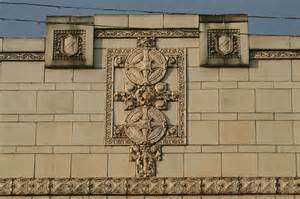Encyclopedia Dubuque
"Encyclopedia Dubuque is the online authority for all things Dubuque, written by the people who know the city best.”
Marshall Cohen—researcher and producer, CNN
Affiliated with the Local History Network of the State Historical Society of Iowa, and the Iowa Museum Association.
SULLIVANESQUE ARCHITECTURE: Difference between revisions
No edit summary |
No edit summary |
||
| Line 5: | Line 5: | ||
--- | --- | ||
Source: | |||
1. Fullerton Heritage. Online: http://www.fullertonheritage.org/Resources/archstyles/sullivan.htm | 1. Fullerton Heritage. Online: http://www.fullertonheritage.org/Resources/archstyles/sullivan.htm | ||
[[Category: Architecture]] | [[Category: Architecture]] | ||
Latest revision as of 05:23, 1 December 2015
SULLIVANESQUE ARCHITECTURE. The term Sullivanesque pays respect to Louis H. Sullivan (1856-1924), one of the most brilliant and imitated architects of the 19th and 20th centuries. As a leader of the Chicago School of Architecture, Sullivan pioneered the design and construction of large-scale, multi-story commercial buildings supported by skeletal steel structures. His brick and terra-cotta buildings were façade-oriented structures noted for their ornamentation. Sullivan's unique style was copied by architects; by the 1890s it gained a popularity that continued for decades. (1)
Sullivanesque architecture was popular in the United States between 1890 and 1920. In Dubuque the BANK AND INSURANCE BUILDING, now the Fischer Building, was described at its opening as Iowa's most elegant business structure.
---
Source:
1. Fullerton Heritage. Online: http://www.fullertonheritage.org/Resources/archstyles/sullivan.htm



